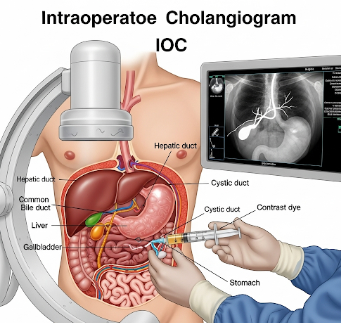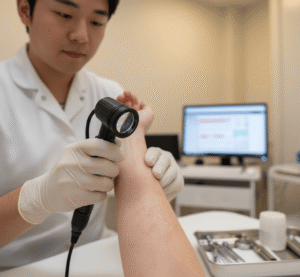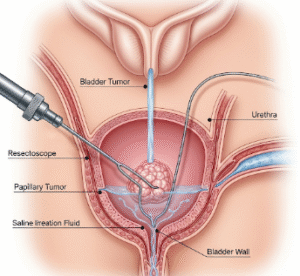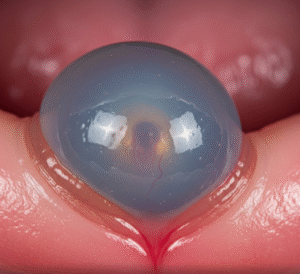Overview
An Intraoperative Cholangiogram (IOC) is a diagnostic imaging procedure performed during gallbladder surgery to visualize the bile ducts. It helps surgeons identify bile duct anatomy, detect stones, and prevent injury during cholecystectomy.
South Korea is renowned for advanced minimally invasive surgery, high-resolution imaging technology, and experienced hepatobiliary surgeons, making it a preferred destination for patients seeking safe and precise gallbladder surgery with IOC.
What is an Intraoperative Cholangiogram?
An IOC involves:
- Injecting contrast dye into the bile ducts during surgery
- Using X-ray imaging to visualize the bile ducts in real-time
- Identifying anatomical variations and detecting stones or blockages
- Performed alongside laparoscopic or open cholecystectomy
Indications include:
- Preventing bile duct injury during gallbladder removal
- Detecting common bile duct stones
- Clarifying uncertain biliary anatomy
- Patients with previous biliary surgery or abnormal liver function tests
What are the Benefits?
- Reduces risk of bile duct injury → Improves surgical safety
- Detects hidden stones → Prevents post-operative complications like jaundice or pancreatitis
- Real-time guidance → Allows surgeons to adjust approach during surgery
- Minimally invasive → Small incision, minimal additional surgical time
- Expert care in Korea → High success rates with state-of-the-art imaging and surgical precision
Procedure Details
1) How should I prepare for an IOC?
- Preoperative evaluation → Blood tests, liver function tests, ultrasound or MRCP
- Medication review → Blood thinners may need temporary adjustment
- Fasting → Typically 6–8 hours before surgery
- Pre-procedure consultation → Discuss surgical plan, anesthesia, risks, and IOC necessity
- Lifestyle adjustments → Maintain hydration, avoid smoking, and follow surgeon’s instructions
2) What happens during the Intraoperative Cholangiogram?
- Anesthesia → General anesthesia as part of cholecystectomy
- Patient positioning → Supine position for laparoscopic or open surgery
- Surgical steps →
- Gallbladder dissected to expose cystic duct
- Catheter inserted into the cystic duct
- Contrast dye injected to visualize bile ducts under X-ray
- Surgeons identify stones, strictures, or anatomical variations
- Adjust surgical approach if needed based on findings
- Duration → IOC adds approximately 15–30 minutes to gallbladder surgery
- Monitoring → Vital signs and anesthesia continuously monitored
3) What happens after the IOC?
- Immediate post-operative care → Patient monitored in recovery for vital signs, pain, and nausea
- Hospital stay → Typically 1–2 days for laparoscopic surgery; longer if open surgery is performed
- Activity restrictions → Avoid heavy lifting and strenuous activity for 1–2 weeks
- Follow-up visits → Check surgical site, liver function, and ensure bile ducts are clear
- Dietary guidance → Gradual reintroduction of normal diet; light meals initially
Risks / Benefits
Risks
- ➤ Mild reaction to contrast dye (rare)
- ➤ Infection at incision or catheter insertion site
- ➤ Bile leak or duct injury (rare, but IOC reduces risk)
- ➤ Bleeding or hematoma formation
- ➤ Temporary nausea or abdominal discomfort
Benefits
- ➤ Reduces risk of bile duct injury during surgery
- ➤ Detects hidden stones and anatomical variations
- ➤ Guides precise surgical intervention
- ➤ Minimally invasive with short procedure time
- ➤ Expert surgical and imaging care in Korea ensures safety and success
Recovery and Outlook
- Immediate recovery → Mild abdominal discomfort and soreness around incision
- Short-term follow-up → Usually within 1–2 weeks to monitor healing and liver function
- Return to normal activity → Light activities after a few days; full recovery within 2–4 weeks
- Long-term outcomes → Most patients experience complete relief from gallbladder-related symptoms with low risk of post-operative complications
- Post-procedure care → Monitor for fever, jaundice, or abnormal pain; maintain healthy diet and hydration
South Korea provides comprehensive post-operative care, including follow-up imaging, dietary guidance, and outpatient support to ensure optimal recovery.
When To Call the Doctor
Contact your surgeon immediately if you notice:
- ⚠️ Severe abdominal pain or persistent nausea
- ⚠️ Fever, chills, or signs of infection
- ⚠️ Jaundice (yellowing of skin or eyes)
- ⚠️ Persistent vomiting or inability to tolerate food
- ⚠️ Drainage or bleeding from surgical site
Best Korea Option / Process
South Korea is a leading destination for Intraoperative Cholangiogram and gallbladder surgery due to:
- Expert hepatobiliary surgeons with extensive experience
- High-resolution imaging technology for precise IOC
- Minimally invasive laparoscopic techniques
- Comprehensive post-operative care and follow-up
- International patient services → Consultation, translation, and scheduling support
Top Hospitals for IOC in Korea:
- Asan Medical Center, Seoul – Advanced laparoscopic cholecystectomy with IOC
- Samsung Medical Center – Expertise in complex biliary surgery and imaging guidance
- Seoul National University Hospital (SNUH) – Comprehensive hepatobiliary care with IOC support
- Yonsei Severance Hospital – Multidisciplinary approach to gallbladder and bile duct surgery
👉 For patients undergoing gallbladder surgery, Intraoperative Cholangiogram in Korea provides precise, safe, and effective bile duct visualization, reducing complications and ensuring optimal surgical outcomes.













